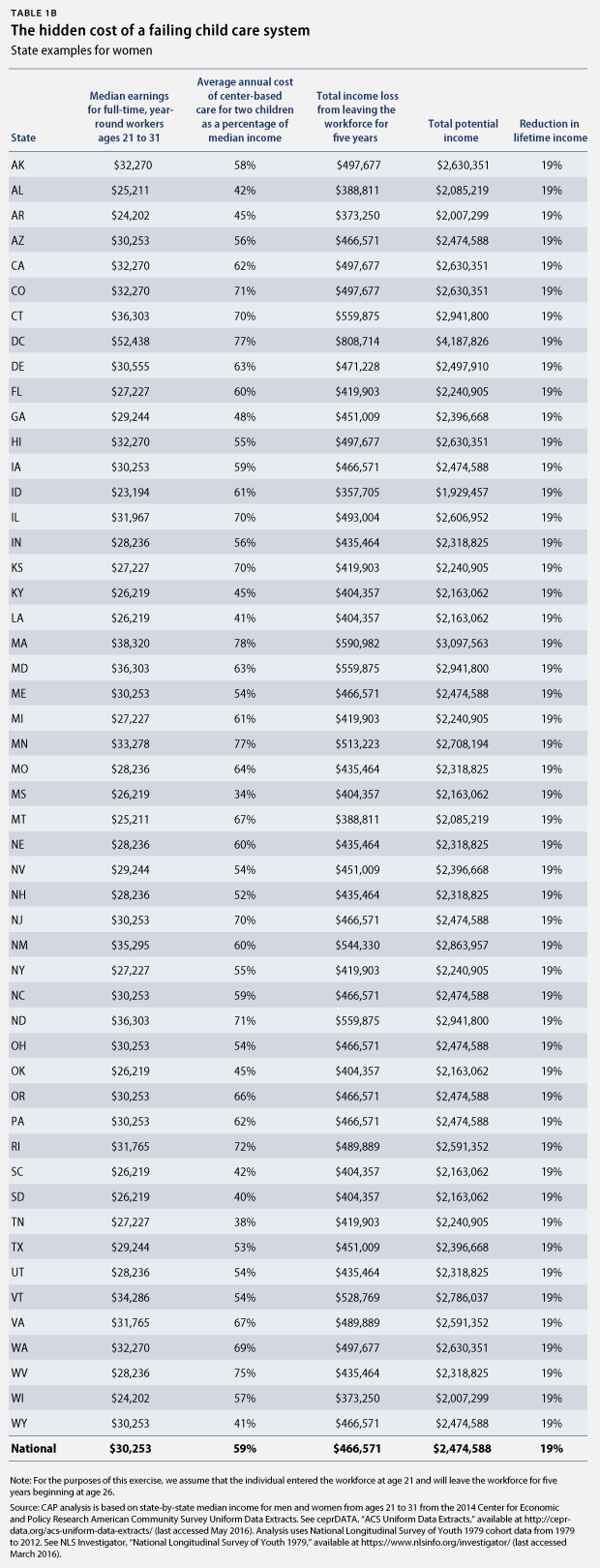See also: Interactive: The Hidden Cost of a Failing Child Care System
The current child care system is failing families. Sixty-five percent of children have all available parents in the workforce, making access to child care an economic necessity. Yet the annual cost for two children in center-based care reaches nearly $18,000. Many families are left to choose between putting a large percentage of their income toward child care, finding cheaper—and potentially unlicensed and unregulated—care, or leaving the workforce to be a full-time caregiver. The high cost of child care is well-documented. However, the cost born by parents who leave the workforce is less understood. The Center for American Progress developed a tool to highlight how families are affected economically when a parent leaves the workforce to become a full-time caregiver. When parents leave the workforce, they often assume that they are losing their annual wage. The reality is that when lost wage growth and lost retirement assets are taken into account, time out of the workforce costs much more than just an annual wage.
This calculator shows total financial impact, including lost retirement assets and benefits, lost wage growth, and lost wages for the years that someone spends out of the workforce.
The tables below show how much income a typical worker who takes time out of the workforce for five years might lose. The tables also include the average cost of center-based care for two kids as a percentage of the median income in each state to illustrate the difficult choice that families face. Families forced to leave the workforce often end up paying much more than the annual cost of child care in the long run. Without resources to pay for child care at the beginning of their careers, however, parents have few options.
It is worth noting that in reality, most families are not paying upward of 80 percent of their income on child care but instead are choosing cheaper, potentially unregulated care. With no good options available, it is easy to see why some parents feel forced out of the workforce. However, these results demonstrate that leaving the workforce to be a full-time caregiver can have equally, if not more, significant economic impacts on families in the long term.


Jessica Troe is the Policy and Outreach Coordinator for the Early Childhood Policy team at the Center for American Progress. Alex Rowell is a Research Assistant for the Economic Policy team at the Center. Michael Madowitz is an Economist for the Economic Policy team at the Center. Katie Hamm is the Senior Director for the Early Childhood Policy team at the Center.